XSS and how JSFuck just f*cked my brain
 Hung Ngo
Hung Ngo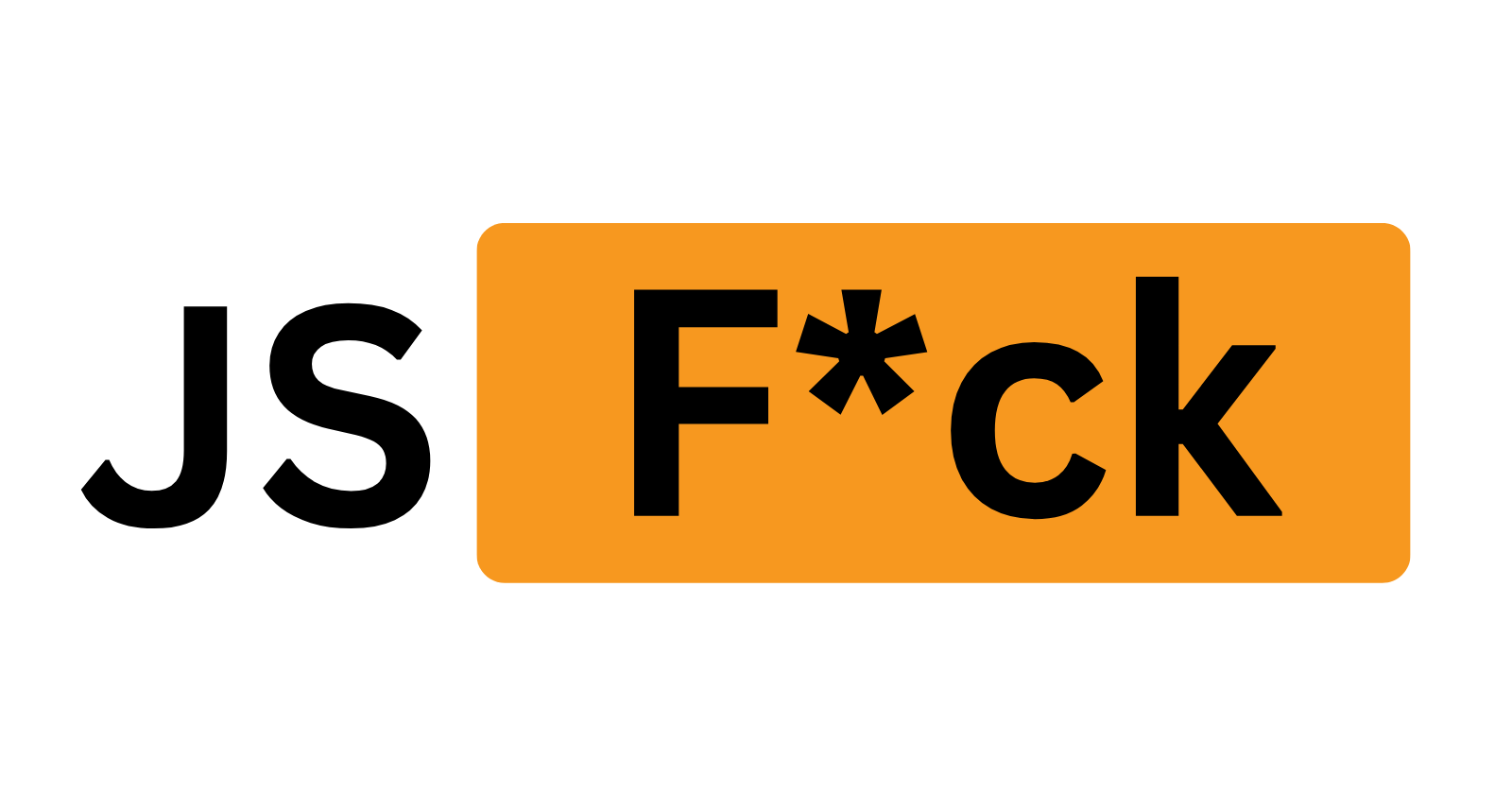
The digital age has brought with it numerous advantages, but also new security threats. XSS, which stands for “Cross-Site Scripting”, has been one of the most frequent issues in the OWASP Top 10. One of the ways we can combat XSS is to properly sanitize the inputs of the requests. But what if there was a technique that could fucked up your sanitization? Introducing JSFuck!
Before I talk about JSFuck, I should first explain what XSS (Cross-Site Scripting) is. Imagine you are using a website or an online platform that you trust to input some information, such as your name or a message. An attacker who is aware of an XSS vulnerability in the website can inject malicious code into the site, which can then be executed by other users who visit the site. This malicious code can steal sensitive information, such as passwords and credit card numbers, or it can manipulate the website to display false information or perform actions that the attacker wants.
So, in the simplest terms, XSS is a way for a hacker to inject harmful code into a website that you visit, which can then steal information from you or harm your computer.
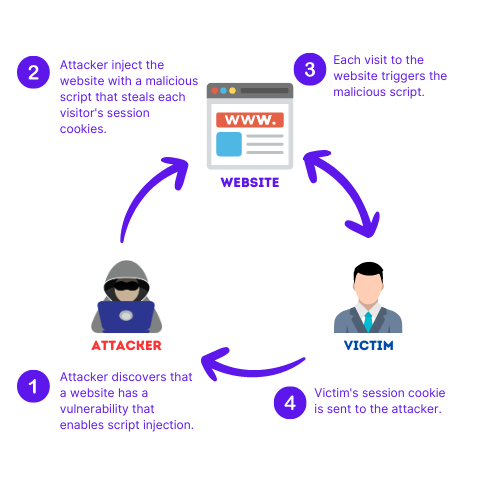
There are also several security practices that you and your organization can follow to prevent XSS. I have narrowed it down to these five:
Input validation: Make sure that any user input is validated and sanitized before being used in any way. This can help prevent malicious code from being executed on the website.
Escaping user input: When displaying user input, it’s important to escape any characters that have special meaning in HTML, such as
<and>. This will prevent any malicious code from being executed when it is displayed on the page.Content Security Policy (CSP): A Content Security Policy is a security feature that helps prevent XSS attacks by specifying which sources of content are allowed to be loaded by the browser.
Up-to-date web browser: Keep your web browser up-to-date and use a browser that has a strong security record, as this can help prevent XSS attacks.
Educate users: Educate your users about the dangers of XSS attacks and what they can do to protect themselves, such as not entering sensitive information into untrusted websites.
Introducing JSFuck
JSFuck is a form of obfuscated JavaScript code that uses only six characters (, , !, (, ), [, ]) to write malicious code. These six characters can be used in a variety of ways to create JavaScript code that can perform malicious actions, such as stealing sensitive information or executing harmful commands. The purpose of JSFuck is to bypass security measures that are designed to detect and block malicious JavaScript code.
note: JSFuck was inspired by Brainfuck, an esoteric programming language created in 1993 by Urban Müller.
In simple terms, JSFuck is a way for hackers to write malicious code that looks like gibberish to the average person, but that can still perform harmful actions when executed. This type of code is used to bypass security measures and harm individuals or organizations.
Okay, now we know what JSFuck is. Let’s take a look on how it works. These are the basics of JSFuck:
false →
![]true →
!![]undefined →
[][[]]NaN →
+[![]]0 →
+[]1 →
+!+[]2 →
!+[]+!+[]10 →
[+!+[]]+[+[]]Array →
[]Number →
+[]String →
[]+[]Boolean →
![]Function →
[]["filter"]eval →
[]["filter"]["constructor"]( CODE )()window →
[]["filter"]["constructor"]("return this")()
We can use the basics to translate the letter “a” in JSFuck:
First start by creating an array
[]which evaluates tofalsewhen used as a boolean value.Use the
!operator to invert the boolean value of the array results intotrue.Use the
+operator to add the boolean valuetrueto an empty array, resulting in the string"true".Use bracket notation to access the 2nd character in the string
false, which is the letter“a”. The code would be("true")[1].Simplify the code by replacing the string
"true"with(![]+[]), which results in the following JSFuck code to represent the letter“a”:(![]+[])[1].Replace the number 1 with the atomic
+!+[]. The result would be:(![]+[])[+!+[]]
If you want to test it yourself, there is a nice JSFuck translator available here.
Exploiting using JSFuck
To test JSFuck, I have set up a small playground by spinning up my Apache server and creating this simple webpage. I have also made a small modification to my server and increased the LimitRequestLine to 100 000 characters from the original 8 177 characters.
My goal is to exploit this webpage by displaying an alert window that says my name.
<html>
<body>
<h2>Pawn me?</h2>
<script>
vuln = (new URL(location).searchParams.get('userinput'))
// "Sanitization" by removing alphabetical and numerical characters
vuln = vuln.replace(/[A-Za-z0-9]/g, '')
eval(vuln)
</script>
</body>
</html>
The website looks like this:
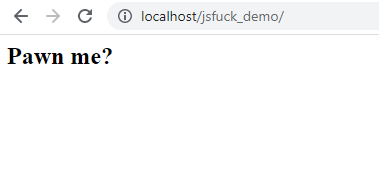
Okay, time for me to put on my hacker hat. At first glance, there are no user inputs that I can exploit. I might, however, be able to create HTTP requests using the URL address. In this case, I am looking to exploit the GET parameter. Armed with this knowledge, I can look into the code. Let’s open my trusty DevTools!
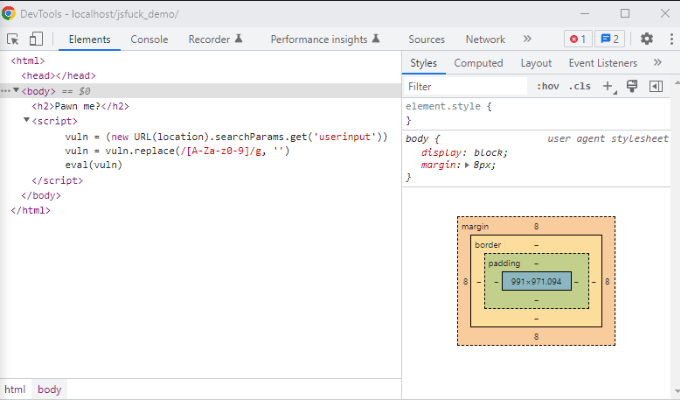
Here I can see that the webpage has some logic in the background. What it does is that it takes the value associated with the URL parameter named userinput and sanitizes it by removing the alphabetical and numerical values. Because of this, I cannot simply exploit the webpage by trying to pass something like alert("Hung").
This is the time that JSFuck comes to the scene! What I need to do is convert the command alert("Hung") into the JSFuck form. To do this, I can use the online JSFuck translator.
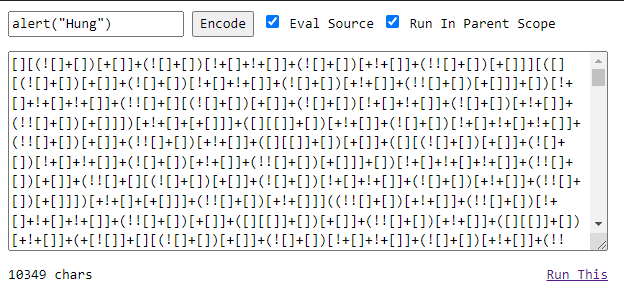
I cannot however just pass this JSFuck output as my payload. There is still one step and that is to convert it to the URL encoded format. For that we can use this online URL encoder.
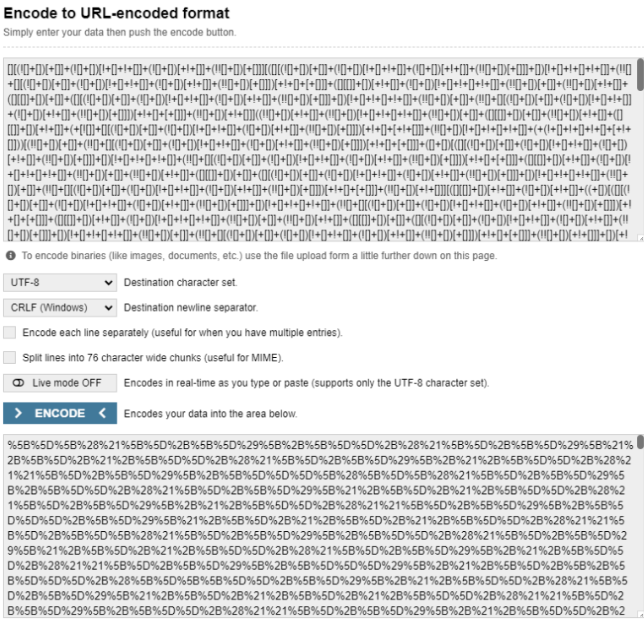
Now the only thing remaining is to use this payload to finish the XSS attack.

This, of course, is just a proof of concept, showing the possibilities of frameworks such as JSFuck. Within your applications, you should pay attention to the propper sanitization and escape all the characters that have the special meaning in HTML.
If you have read so far and enjoyed the article, you might consider following me on LinkedIn or Mastodon (or here on Hashnode) to be notified of any of my new content.
Subscribe to my newsletter
Read articles from Hung Ngo directly inside your inbox. Subscribe to the newsletter, and don't miss out.
Written by

Hung Ngo
Hung Ngo
Humorous, unique, nerdy genius who loves coding, cybersecurity, cats, and pancakes. I occasionally share my passion with others via blog posts.